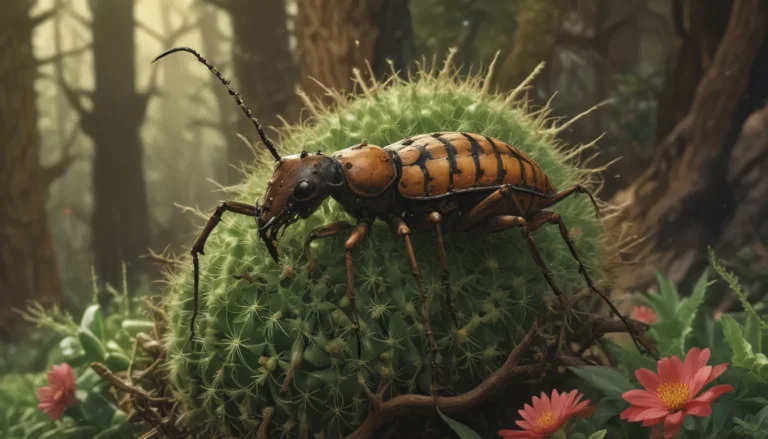Ultimate Guide to Growing and Caring for Arrowhead Plants

Arrowhead plants are the superheroes of the houseplant world. They may look delicate and beautiful, but they are nearly impossible to kill. With their unique arrowhead-like foliage and vibrant colors, they are a must-have for any indoor plant collection.
If you’re interested in adding some brawn and beauty to your home with arrowhead plants, you’ve come to the right place. In this comprehensive guide, we’ll cover everything you need to know to cultivate and care for these amazing plants.
What Is an Arrowhead Plant?
Arrowhead plants, also known as Syngonium podophyllum, go by various names like American evergreen, five fingers, and goosefoot vine. They are tropical natives with sturdy, hard-to-kill characteristics and striking multicolored leaves.
In Greek, “Syngonium” means “together,” symbolizing the fused ovaries in each flower of this plant. On the other hand, “podophyllum” is Latin for leaves that attach to a stout stalk.
Originally from tropical regions like Mexico and Bolivia, arrowhead plants have now naturalized in various places across the globe. Their epiphytic nature allows them to thrive in trees and forests, making them resilient and adaptable houseplants.
Cultivation and History
The botanists Linnaeus, Schott, Engler, and Krause have contributed to the classification and cultivation of the Syngonium genus over the years. Today, arrowhead plants are popular for sale and export as houseplants and garden specimens.
Propagation
Arrowhead plants propagate best through stem cuttings. Simply trim a cutting below a node and place it in water or potting medium to encourage root development. For the best results, propagate in the spring or summer when the plant is actively growing.
Transplanting
If you choose to transplant a purchased arrowhead plant, select a container one size larger than the nursery pot. Use a well-draining potting medium with added perlite or orchid bark, and ensure the plant maintains its original height in the new container.
How to Grow Arrowhead Plants
Creating a conducive environment for your arrowhead plant is crucial to its growth and health. These plants thrive in bright but indirect sunlight and require high humidity levels reminiscent of their tropical origins. Regular watering and occasional feeding with diluted liquid houseplant food ensure robust growth.
Growing Tips
- Grow in bright, indirect sunlight
- Provide a high level of humidity
- Allow the top half-inch of soil to dry out between watering
- Reduce watering during the winter
Pruning and Maintenance
Arrowhead plants benefit from monthly feeding with liquid houseplant food during the growing season. Pruning is minimal but can help shape the plant and promote fuller growth. Regular repotting and soil renewal keep the plant healthy and thriving.
Cultivars to Select
The variety of arrowhead plant cultivars is vast, offering differing leaf sizes, shapes, and an array of colors. Popular cultivars like ‘Merry Maria’ and ‘White Butterfly’ showcase the diversity and beauty of these plants, making them a versatile choice for any indoor space.
Managing Pests and Disease
While arrowhead plants are resilient, they are not immune to pests and diseases. Common issues like aphids, mealybugs, scale, and spider mites can be controlled through regular monitoring and proper care. Similarly, bacterial leaf spot and root rot can be managed with good hygiene practices and timely interventions.
Best Uses
Utilize arrowhead plants as potted specimens, hanging plants, or trained climbers on moss-covered poles. They also blend well in dish gardens and contribute to diverse indoor environments with their lush foliage.
Quick Reference Growing Guide
- Plant Type: Herbaceous evergreen
- Flower/Foliage Color: White, red berries (rare indoors)/green, pink, yellow, rust, red, cream, white, variegated
- Native to: Tropical areas from Mexico to Belize
- Hardiness (USDA Zone): 10-12
- Maintenance: Low
- Exposure: Bright, indirect light is best but can tolerate low light
- Soil Type: Potting soil with added perlite or orchid bark
- Height: Up to 6 feet
- Spread: Up to 3 feet
- Water Needs: Medium
- Common Pests and Diseases: Aphids, mealybugs, scale, spider mites; bacterial leaf spot, root rot
Conclusion
Arrowhead plants are the perfect combination of beauty and toughness, making them ideal additions to any indoor space. By following the tips and guidelines in this guide, you can grow and care for these plants with ease, transforming your home into a lush, vibrant oasis.
Whether you’re a seasoned plant enthusiast or a beginner looking to expand your indoor garden, arrowhead plants offer a versatile and visually appealing option. So go ahead, bring some brawn and beauty into your home with these resilient and striking houseplants!





